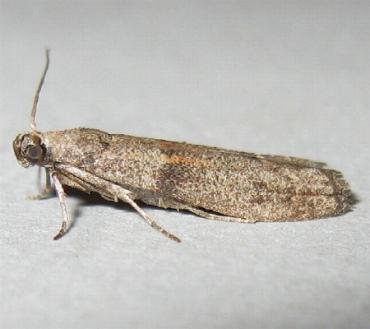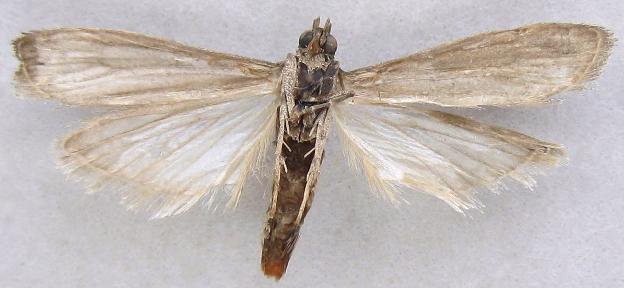
| Almond Moth (previously known as Ephestia cautella) PHYCITINI , PHYCITINAE, PYRALIDAE, PYRALOIDEA | (donherbisonevans@yahoo.com) and Stella Crossley |

(Picture: courtesy of
Casa Bernardo, Brasil)

| Almond Moth (previously known as Ephestia cautella) PHYCITINI , PHYCITINAE, PYRALIDAE, PYRALOIDEA | (donherbisonevans@yahoo.com) and Stella Crossley |

(Picture: courtesy of
Casa Bernardo, Brasil)
This Caterpillar is an international agricultural pest, particularly of
The caterpillar grows to a length of about 1 cm.
When one caterpillar encounters another, they each produce a small amount of brown liquid from the mouth, and this causes the Caterpillars to walk apart. This appears to be a mechanism that prevents overcrowding of the caterpillars. Unfortunately for the caterpillars, this mandibular secretion also attracts parasitoid wasps such as Venturia canescens ( ICHNEUMONIDAE ).

The adult moths have fawn forewings, each with various vague markings including a brown smudge near the middle, a dark medial band, and a narrower pale zigzag submarginal band. The wingspan is about 2 cms.
The males and females come together using pheromones the chemical nature of which have been identified. The females emit these chemicals and the males sense them and fly to the female. The adults also use ultrasonic sounds (~80 Khz) in their courtship behaviour.

The species occurs world-wide, for example :
as well as being introduced by unfortunate accident into Australia, where it occurs widely, including

Attempts to control the pest have used :
Further reading :
Ian F.B. Common,
Moths of Australia,
Melbourne University Press, 1990, p. 350.
Francis Walker,
Crambites and Tortricites,
List of the Specimens of Lepidopterous Insects in the Collection of the British Museum,
Part 27 (1863), p. 73, No. 27.
 caterpillar |  butterflies |  Lepidoptera |  moths |  caterpillar |
(updated 21 August 2012, 18 April 2014, 12 March 2021, 21 April 2022)